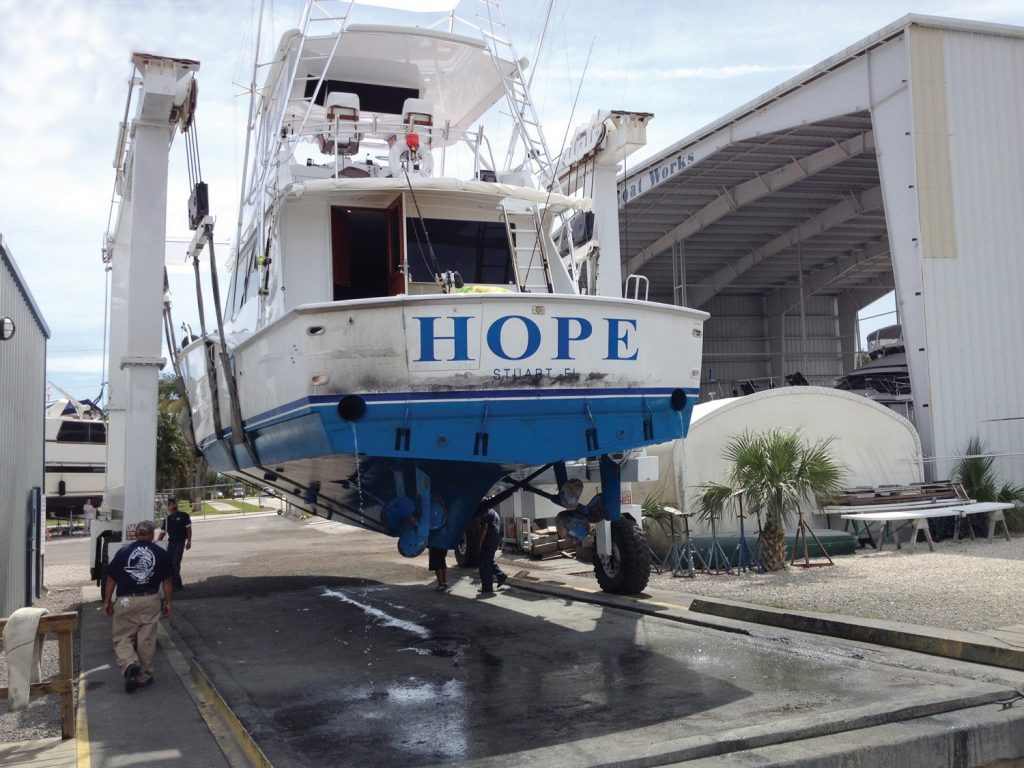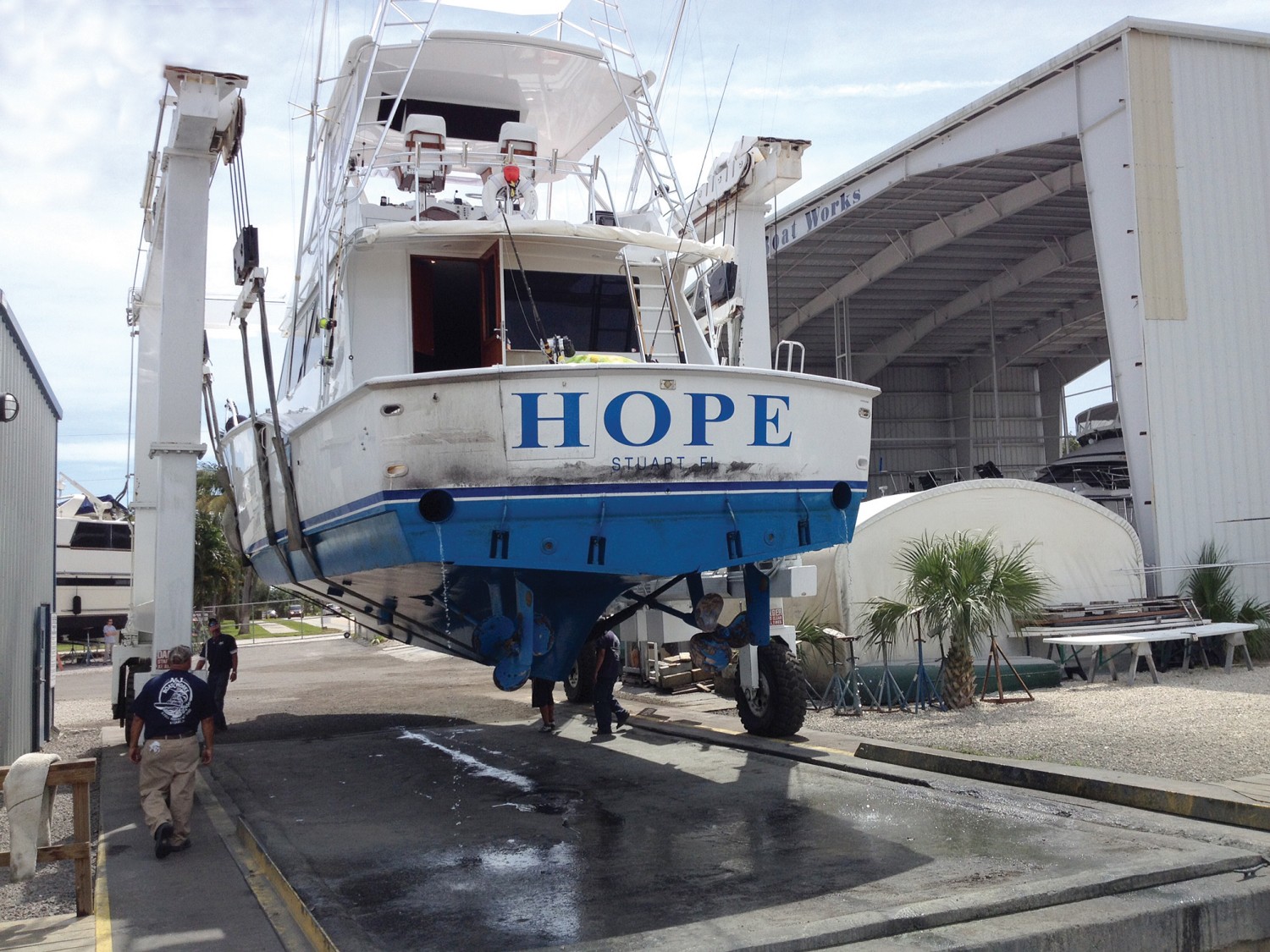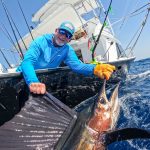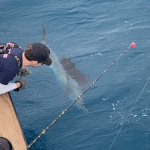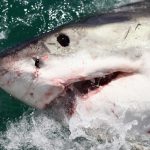Article Courtesy: inthebite.com | Originally Published: 9/10/20 | Click here for original article.
Disaster Averted: Learning from an Emergency at Sea
Editor’s Note: The following is a report filed by Thomas Dyer, former president of the Stuart Sailfish Club. Dyer’s 55-foot Hatteras caught fire while en route to the Bahamas but fortunately through his actions and those of his crew, disaster was averted. In hopes that others may learn more from this incident, we have chosen to publish his unedited report here.
On Friday May 30th, we departed Stuart at 0700 for a long-awaited month-long fishing trip to Cape Eleuthera on our 55-foot Hatteras, Hope, with overnight stops in Bimini and Nassau. Following my retirement last year and after [my wife] Margaret’s successful battle with breast cancer, we both felt it was time for an extended fishing trip. We have been planning this trip for months and had six weeks of stores and supplies on board. Below is the Incident Report I filed with our insurance company and also some lessons learned that I thought you all might benefit from. Because, as you will read, this could happen to any of us.
Incident Report
Date and time of incident: May 30, 2014 at 0810
Location: Three miles offshore and just north of Jupiter Inlet, Florida
Destination: Bimini, Bahamas
Crew: Four souls (myself, Margaret, her sister Lou Smith and my mate Mike Powell) on board; departed Stuart at 0700
Speed and conditions: Hope was on autopilot and navigating a direct route to Bimini, cruising at 1300 RPMs at 10 knots. Seas were one foot; wind was SE at 5 to 10 mph (we were towing our Action Craft flats boat on a towing bridle) and the weather was clear. We were 88 miles from Bimini.
At approximately 8:10 a.m. the port engine began to lose RPMs and very dark black smoke was discharging from the port exhaust when I heard a loud bang from the engine room. I put the controls into neutral and immediately began attempting to shut down both engines. I could not get the port engine to shut down even after I pulled the emergency shutoff valve.
My mate opened the engine room hatch and saw that the port engine was engulfed in flames. At that point the entire boat was under severe smoke coverage including the interior and the bridge. My mate saw the Halon system deployed and he slammed shut the engine room hatch.
I called the Coast Guard on channel 16 and declared a Mayday, provided our location, described the vessel and souls on board and then repeated the same Mayday. The Coast Guard immediately responded and dispatched a plane and a RIB from Jupiter. The plane reported being over the scene in about 10 minutes and the RIB arrived on site in about 20 minutes and put two Guardsman on board to check on us. My mate deployed Class I life preservers and had both ladies put them on and be prepared to abandon ship. He then grabbed our ditch bag (flares, EPIRB, handheld VHF, signal mirror, water, etc.) and put it at the transom. I also called BoatUS and requested assistance. BoatUS arrived at the same time as the Coast Guard and handed us a 12-volt water pump in case we were taking on water.
Four or five boats that were nearby also came to Hope within a few minutes and my mate transferred both ladies onto one those boats. I now knew they were safe and turned our attention to saving Hope.
My mate ran into the now-dark salon to the galley to retrieve a fire extinguisher (he could not go into the engine room where two extinguishers are mounted) in case the Halon system did not completely
put out the fire. There was still significant smoke emitting from the engine room and we were not sure if the fire was out or not. He again opened the engine room hatch and it appeared the fire was out.
The bilge pump indicators on the bridge showed the engine room bilges were running and I suspected we were also taking on water. My mate then went back into the engine room to see if he could find the source of the water that was triggering the bilge pumps. What was thought to be water entering the vessel was actually fuel from the severed fuel lines on the port engine, which brought the fuel level in the bilges up to the stringers in the engine room. Mike immediately ran to the forward bulkhead and closed all the fuel manifolds and that solved that problem.
BoatUS hooked Hope to a tow line and began towing Hope back to Stuart. I then called A&J Boat Works, who has done bottom jobs and repairs on our other sportfish Unicity for over 12 years. By the time BoatUS towed us into A&J they had the Travelift deployed. They hauled Hope and placed it on the hill with jackstands. I called Scott Stamper at Atlas Insurance and described the incident and he requested I draft this email and send it to Casey at his office. He also approved us removing our clothing and other personal effects which we did to avoid any smoke damage. Scott said he would dispatch insurance adjusters to see Hope following his receipt of the email.
Safety equipment on board included two personal EPIRBs, one static EPIRB and one handheld EPIRB, a satellite phone, a Spot satellite system, a new eight-man liferaft, 12 new Class 1 life preservers, a handheld VHF and six fire extinguishers, plus our ditch bag and the Halon fire suppression system.
Lessons Learned
Hailing from Broward County, I have been a lifelong boater and love to fish. I have never encountered a catastrophic failure or fire before and it was more than frightening. But I never leave the dock without doing a full safety lecture when we have guests on board, including the location of all safety equipment and assigning tasks to each member of the crew in the event of this type of event. I am convinced that these drills and lectures provided the knowledge and confidence to calmly deal with each of the actions necessary to save the crew and eventually, Hope. I hope each of you have your own safety program.
Prior to every trip across the Gulf Stream, I always have our mechanic do a thorough check of all engines, generators, etc. and my mate and I had completed a full oil change, filter changes, checked and filled all batteries, checked all belts, checked and ran all bilge pumps and had the Halon and fire extinguishers checked and serviced and had all the spare parts on board to deal with most routine issues. The cause of the fire has now been determined to have been caused by a broken valve in R3 and then the piston drove the valve up and through the injector which in turn severed the fuel lines to the port engine. This allowed misting fuel to blow into the port turbo which then ignited the fire. This type of catastrophic mechanical failure could not have been anticipated from any routine maintenance or service.
It appeared to me that the port engine continued to run and then ran away as I could hear the turbo screaming even after I pulled the emergency shutoff valve. I first went to neutral on both engines and then attempted to pull both shutoff valves. The starboard engine valve was frozen and I could not pull it an inch. The port engine valve engaged but, for some reason the engine continued to run (we believe the Halon finally choked it off). I did not have either of the emergency shutoff valves inspected or tested. This was big mistake number one.
While I had the Halon system inspected and serviced prior to the trip, on the bridge I only have a Halon system monitor that just shows a green light indicating the system is charged and ready and a red light indicating the system had discharged. I do not have a manual switch to discharge the system. I understand that the temperature needs to reach 650 degrees before it automatically discharges. If I had a manual switch I could have discharged the system manually and put the fire out much earlier and limited the damage greatly. No manual Halon switch was big mistake number two.
I have always had BoatUS’s unlimited towing policy and have never had to use it. It fully covered this towing event. Its crew, Capt. Ryon Helmig and mate Doug Neuitt, were very fast getting to us, immediately passing us a 12-volt pump. The mate boarded us right away and began preparing lines for the tow. Captain Ryon was very experienced and did an outstanding job of getting us to A&J and putting Hope right into the haul slip. Keep your towing policy up to date and I strongly recommend having the unlimited policy as well.
We never lost our 12-volt power to the bridge and the chartplotters, radar and VHF continued to function. But I always keep a handheld VHF on the bridge just in case and as it turned out the fixed-mount VHF would not switch channels during the emergency. Had I not had the handheld on the bridge, I would have lost the ability to maintain communications with the Coast Guard and BoatUS. Always keep a handheld at the helm and one in the ditch bag.
The Coast Guard was magnificent; the lady captain called me on the VHF to report that their plane was on the scene and the RIB was running at 55 mph to get to Hope. She had our position from the Coast Guard aircraft and she keep in contact all the way from Jupiter to our position. Two members of their crew boarded Hope and made sure the fire was out and all on board were safe. They stayed by us until BoatUS started our tow.
Hope, After the Fire
With Hope safely on the hill at A&J Boat Works, the hard part now began. We consulted with three experts and elected to go with the 715hp Cummins QSM-11s. And we selected Ron Marguin from East Coast Marine Services to handle the removal of the old Detroit Diesel 1271s and the fabrication and installation of the new Cummins engines. The entire salon deck had to be completely cut out and removed to allow for the extraction of the old engines and the installation of the new engines. Once the old engines and systems were removed, the entire engine room was painted and the reassembly process commenced. We replaced all batteries, switches and chargers as well as the inverter, upgraded the old generator to a 17.5kW Onan and rewired, replaced and/or refurbished all the ancillary equipment.
Six months later and after about $350,000 in expenses, Hope was back in the water and sea trials conducted. She lost about 8,000 pounds which raised the waterline by four inches in the stern and six inches in the bow. We gained four knots on the top end (up to 24 knots) and four knots at cruise (to 20 knots), burning only 42 gallons per hour. At six knots trolling speed, we were only burning 2.3 gph. Overall we reduced our fuel burn by 60 percent and greatly increased our range.
Based on the lessons learned from our fire, we increased our fire suppression system to 75 pounds with a manual trigger, installed engine room cameras that link to our Garmin chartplotters, installed fire retardant and sound reduction insulation in the engine room ceiling, installed 120v and 12v lighting for emergency lighting in case of power loss and upgraded the quality and quantity of our mounted handheld fire systems. With the previous major renovation of Hope and the new engine room and engines, she was ready to repeat the six-week fishing trip which was interrupted by the fire on May 30th, 2014.
Our Ditch Bag
We always maintain a bright yellow flotation ditch bag which is kept on the bridge or right inside the salon door. It includes an up to date flare kit with both handheld and shotgun type flares; two signaling mirrors; two handheld EPIRBs; a handheld VHF with spare batteries; a small and large flashlight with spare batteries; four bottles of water; two emergency beacons; a foil warming blanket, and a Spot emergency notification system. In addition, we also carry an eight-man life raft and a static EPIRB on the boat.
